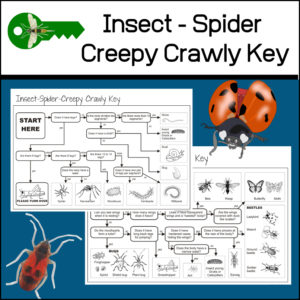Showing 61–80 of 129 resultsSorted by latest
-
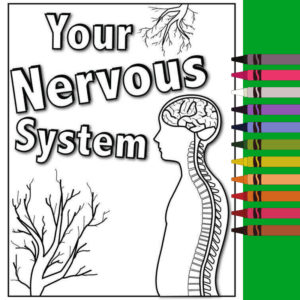 $2.50Buy Now
$2.50Buy NowAn informational coloring book about the nervous system for elementary students. There are 9 coloring pages plus a short reading comprehension quiz at the end!
-
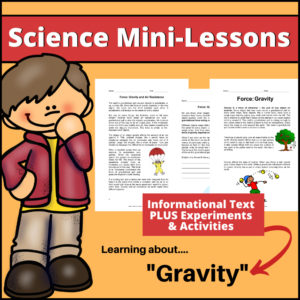 $2.50Buy Now
$2.50Buy NowStudying ‘The force of Gravity‘ in your classroom? This Mini-Lessons resource has been designed to help students gain a greater understanding as well as to help them retain the information they are learning!
-
 $3.00Buy Now
$3.00Buy NowStep by step instructions for performing 7 electricity related experiments:
1 – Simple Circuits
2 – Build a Dry Cell Battery
3 – Potato Battery
4 – Homemade Electromagnet
5 – Energy Detective
6 – Static Electricity
7 – Conductivity -
 $4.99Buy Now
$4.99Buy NowStudying birds? Ornithology? Perhaps you are simply looking for coloring pages of beautiful birds? Here is a resource that would be a good addition to your classroom. Some of the birds included: American Kestrel, Nighthawk, Mourning Dove, Barn Swallow, White-breasted Nuthatch, Blue Jay, Cardinal, Baltimore Oriole and many, many more!
*** 80 coloring pages, each with a different North American species! ***
Each page features a large b/w illustration of one bird and the type of bird that is displayed.
-
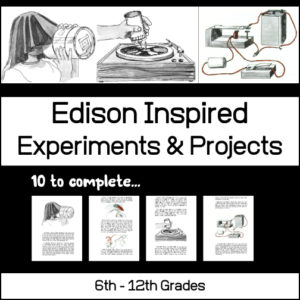 $1.00Buy Now
$1.00Buy Now10 Experiments / Projects inspired by Edison – Including: A phonograph Pick-Up, The Relay in Action, A Pinhole Camera and 7 others!
-
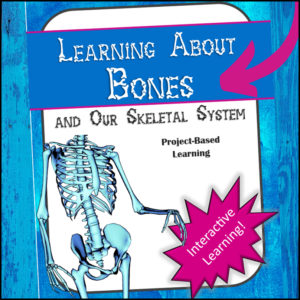 $4.00Buy Now
$4.00Buy NowStudents will enjoy this ANATOMY / BIOLOGY / HEALTH resource as they learn about their bones and skeletal system! Using this product, students can create either a lapbook or a Science notebook.
-
 $1.50Buy Now
$1.50Buy NowInject a little history into your science lessons and perform some cool experiments too!
What you’ll get:- – 2 Short informational texts: One on Benjamin Franklin and one on Franklin’s Glass Armonica
- – 4 Experiments: Bottle Pipes, Lemon Battery, Magnetic Art, and the Thermometer
-
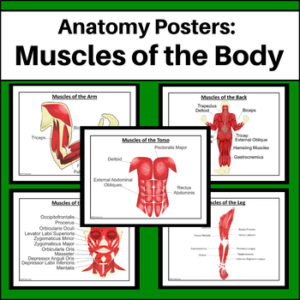 $3.00Buy Now
$3.00Buy NowPerfect for any Middle School or High School Biology / Anatomy Classroom teaching human anatomy: Anatomy Posters – Muscles of the Body. These 5 colorful posters will help students quickly identify muscles of the body (Arm, Leg, Back, Torso and Face). Great for Health classrooms as well!
-
 $1.50Buy Now
$1.50Buy NowSeals are found along most coasts and cold waters, but a majority of them live in the Arctic and Antarctic waters. Harbor, ringed, ribbon, spotted and bearded seals, as well as northern fur seals and Steller sea lions live in the Arctic region. Whether you are studying these wonderful animals or just want to add a quick side lesson, here is a Seal Shape Book that students can use to self-publish their created stories, reports and poems! Templates have differing line heights to accommodate a variety of grade levels.
-
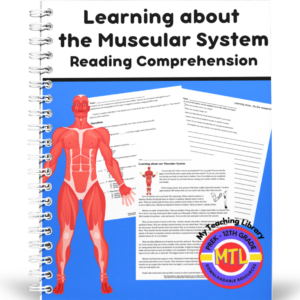 $2.00Buy Now
$2.00Buy NowStudents will read about the muscular system and learn facts such as how many muscles are in the body, what are muscle fibers, the three different types of muscles and much more. After reading and learning about the body / human anatomy, students will answer multiple choice questions.
Also included: A research and writing activity that may be assigned at your discretion!
Answer Key provided.
Reading level:
Flesch-Kincaid Grade Level: 5.3
Linsear Write Formula : 5.1 -
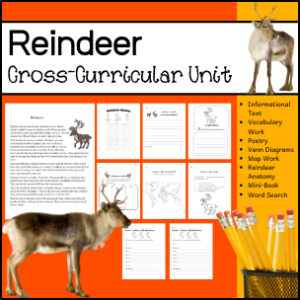 $3.00Buy Now
$3.00Buy NowEngaging, cross-curricular unit all about reindeer!
Includes:
- – Informational Text and worksheet (true/false)
- – Vocabulary work
- – Acrostic poetry
- – Venn diagrams
- – Map work
- – Reindeer anatomy
- – Mini-Book creation
- – Word Search
- – Informational Text and worksheet (true/false)
-
 $2.50Buy Now
$2.50Buy NowHelp students develop their reading comprehension while building vocabulary and content knowledge plus practice their writing skills using this cross-curricular resource based on jellyfish! You can use this resource to reinforce Language Arts skills while teaching about sea life – the jellyfish.
-
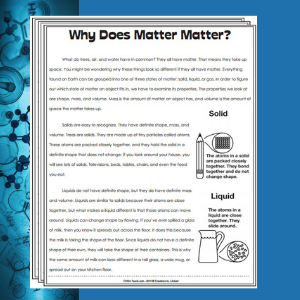 $1.00Buy Now
$1.00Buy NowThis informational text will help define matter and its 3 main stages (solid, liquid and gas). After students read the article, they will be asked comprehension questions to assess their understanding. Answer Key also included.
-
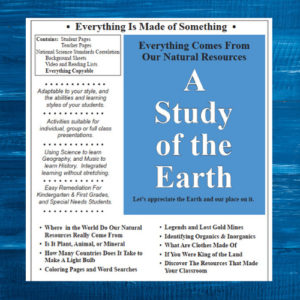 FREEBuy Now
FREEBuy NowThis free curriculum resource is from the Minerals Education Coalition.
-
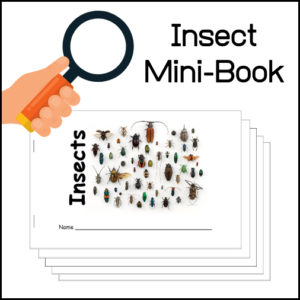 $2.00Buy Now
$2.00Buy NowHelp your students learn about insects with their very own 12 page mini-book! This is a perfect tool to use as a study aid as it includes important facts about insects such as…the four things all insects must have: 3 body parts, 2 antennae, 6 jointed legs and an exoskeleton. This little book will also give examples of creepy crawlies that are not insects, how some insects have 1 or 2 pair of wings, how some are helpful and some are harmful. At the very end of the book, students are asked to draw their favorite insect.
-
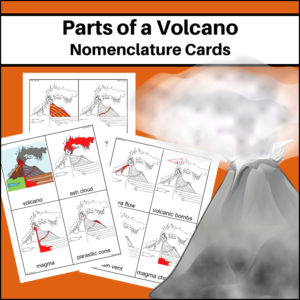 $2.00Buy Now
$2.00Buy NowParts of a Volcano – Nomenclature Cards – This resource will help students learn and study the various parts of a volcano: ash cloud, magma, parasitic cone, lava & ash layers, side vent, crater, pyroclastic flow, lava flow, volcanic bombs, main vent, and magma chamber.
-
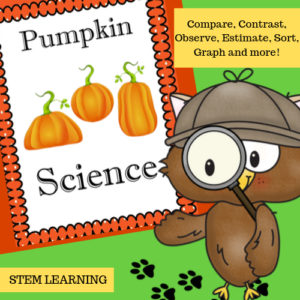 $3.00Buy NowPumpkin Science has several fun, hands-on activities that ask students to compare, contrast, observe, estimate, count, sort, investigate, graph and much more…Students can even create a Pumpkin Science Journal or use pages as notebooking pages.See more about this product in the description below.
$3.00Buy NowPumpkin Science has several fun, hands-on activities that ask students to compare, contrast, observe, estimate, count, sort, investigate, graph and much more…Students can even create a Pumpkin Science Journal or use pages as notebooking pages.See more about this product in the description below. -
 $4.50Buy Now
$4.50Buy NowThere are over 500 known species of sharks in the world! Most students love studying sharks and this unit has been created to help students record the knowledge they learn during a study on sharks as well as personal reflections of what has been learned.
This resource includes:
- – Creating a Notebooking Project…What is Notebookiing?
- – Supply list
- – Teacher pages
- – Student organizational pages
- -‘Jump off’ Questions designed to get students thinking about the different shark related questions they can research
- – 32 Notebooking pages
Notebooking is a coined term for what can also be referred to as educational journaling or scrapbooking.
-
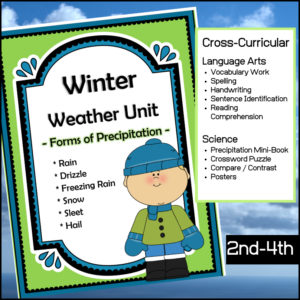 $5.00Buy Now
$5.00Buy NowYour students will enjoy this cross-curricular resource, Winter Weather Unit – Forms of Precipitation, as they learn about the different forms of precipitation and related vocabulary! Students will be engaged in vocabulary work, spelling, handwriting, sentence identification, comparing / contrasting and more.
16 weather-related vocabulary words: precipitation, rain, drizzle, freezing rain, snow, sleet, hail, atmosphere, moisture, droplets, snowflake icy, crystals, frozen, updraft, and evaporation.
In this resource, you get:
- Word Wall cards
- Types of Precipitation Posters
- Weather Worksheets (both Language Arts & Science)
- Precipitation Mini-Book
- Puzzles


